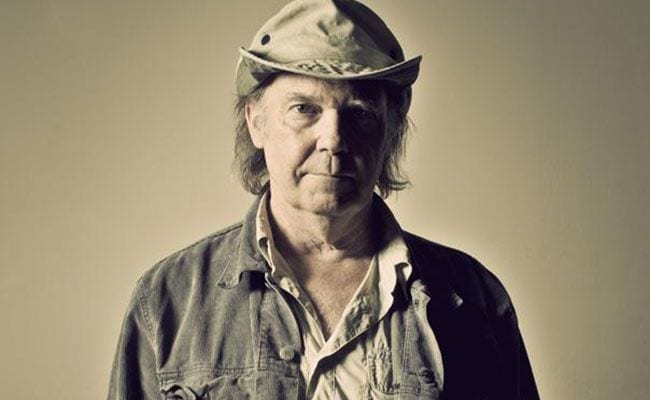
If I were to tell you that Neil Young’s album Storytone comes with some very biting and direct lyrics, you would probably respond with something along the lines of “Yes. And cows go ‘moo’, dogs go ‘woof’ and cats go ‘meow’. What else you got?” That’s a fair enough question. But what if I were to tell you that a majority of the album was recorded with an orchestra? And some of the other ones had a swinging big band behind his voice? And that on Storytone’s deluxe edition, you hear each song recorded again with Young’s voice backed up by only one instrument such as a piano, resonator or ukulele? Storytone is kind of a paradox.
Neil Young’s latest batch of songs are mostly personal reflections with a few things set aside that he holds to be universal truths. The sounds therein can be either massive or hushed. And as far as the deluxe edition goes, some songs get both treatments. On first contact, you don’t know whether to listen to the arrangements or the messages. All I can say is that time spent with Storytone can help solve that quandary. How else can you register big orchestral swells behind lines like “end fracking now”?
A lot of Storytone could be seen as a reflection of Young’s personal life as of late. But I treat that as a neither-here-nor-there issue since I’m not too keen on poking through an artist’s dirty laundry unless they hang it out for all to see. He tells us that “I’m not different from anyone else” on “I’m Glad I Found You”, a ballad for a loved one waiting at the end of life’s long path. But as early as Storytone‘s second track, he’s waiving a banner for mother Earth. “Who’s Gonna Stand Up?” is loaded with environmentalist sloganeering, which shouldn’t be a shock to anyone since Young once wrote an entire album about an electric car. “Who’s gonna stand up and save the Earth? / Who’s gonna say that she’s had enough” goes the chorus in a major key upturn. The minor key verses, as usual, don’t mince words – dissing on fracking and encouraging people to “stand up to oil”.
The next song puts Young in the driver’s seat – of a car, that is. “I Want to Drive My Car” is an open road blues set to simmer on the solo version. The rock band version provides the tune with a tension release that it almost neuters it. The main character needs to “find some fuel”, succinctly capturing the modern dilemma of someone who loves classic cars but can’t stand the thought of burning any more fossil fuels. The car itself is driven into the next song “Glimmer”, but it’s hardly the main point of the song. Now we’re dealing with the absence of a loved one. “When I’m riding down the car in my car, traveling without you / I can still see you sitting there right by my side.” As a solitary piano ballad, it’s a good fit. With a cinematic preamble from a full orchestra, it’s sometimes too odd for its own good.
And I suppose that’s the thing that keeps Storytone from ringing true. Young is singing about things he cares about, like love and nature. He’s toying with arrangements, like resonators, harps and horn lines. He’s offering snapshots of one song existing in different dimensions. I get what he’s going for, but something just doesn’t sit right. The big brass sounds in “Hello Chicago” are gimmicky whereas the solo piano version sounds so earnestly lonely. The greasy, sleazy horns of “Like You Used to Do” are in direct contrast of the acoustic guitar and harmonica version.
It’s foolhardy to think that Neil Young could be sweating over an album having an identity crisis like this one. It’s now been 46 years since he recorded his first solo record. If he wants to baffle us, I think he’s earned the right to do so ten times over. For many aging artists, that’s the key to staying vital. But that doesn’t mean that Storytone is one of Young’s greatest achievements. Sometimes it sounds like a deathly serious joke. Other times, it sounds like nothing more than a nicely produced notion that happened to cross his mind one day. Young’s way with words and melody are not in question. Songs like the opener “Plastic Flowers” can hold up on their own. So if you’re a less-is-more kind of listener, you’ll get all the enjoyment you need out of the songs in their skeletal form. Sometimes the window dressing helps, as it does on “Who’s Gonna Stand Up?”. But the full enchilada is for those who never see a problem with having more on top of more.

![Call for Papers: All Things Reconsidered [MUSIC] May-August 2024](https://www.popmatters.com/wp-content/uploads/2024/04/all-things-reconsidered-call-music-may-2024-720x380.jpg)



